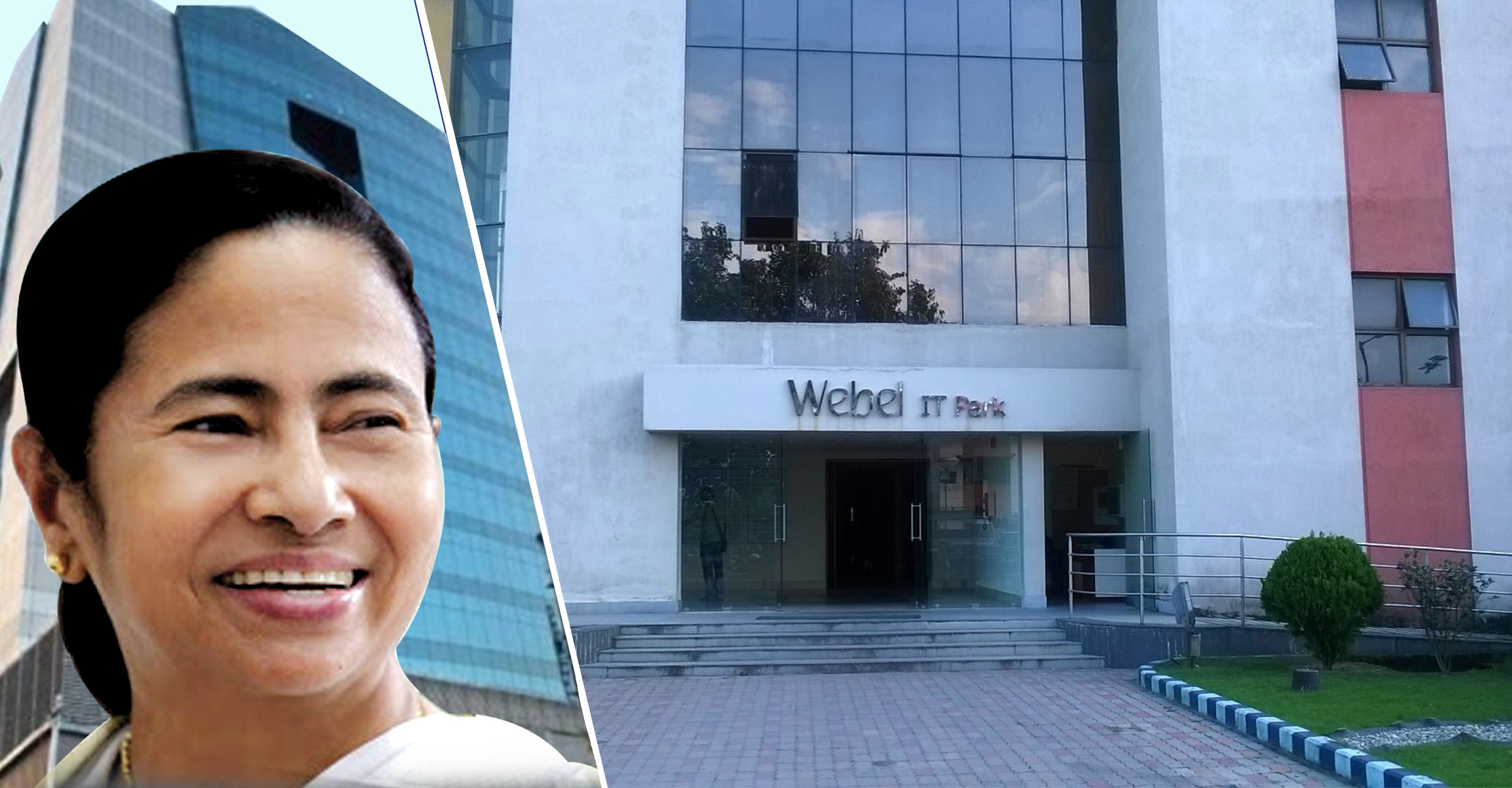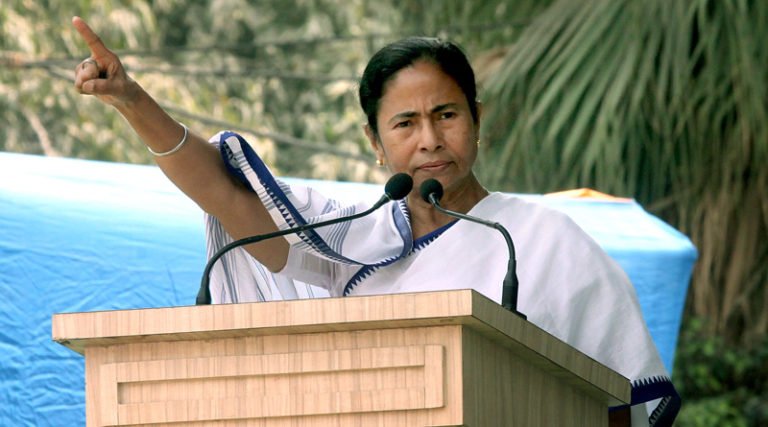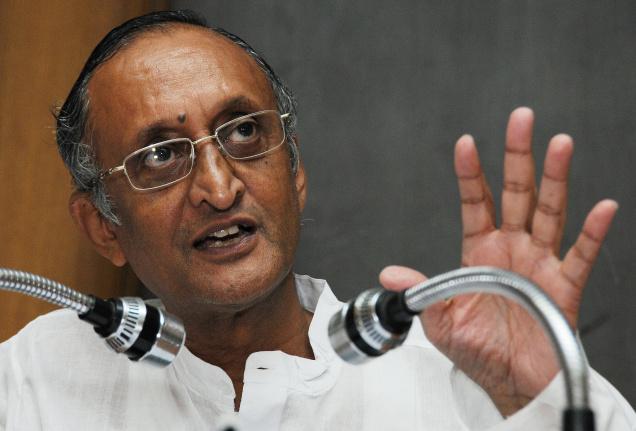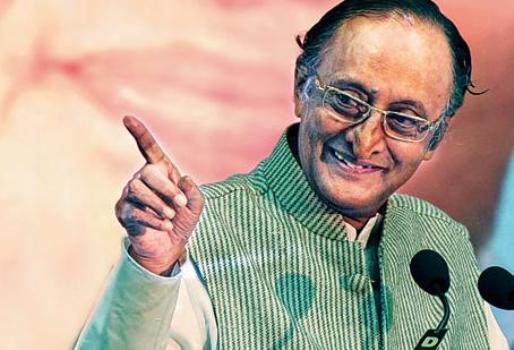The State Finance Minister, Dr Amit Mitra placed the Interim Budget for 2016-17 today in the West Bengal Assembly. Dr Mitra had placed a vote-on-account earlier this year because of the election.
While presenting the vote-on-account in the Assembly earlier, Dr Mitra had introduced no new taxes and proposed a 17% hike in Plan outlay, amounting to Rs 57,905 crore, for financial year 2017.
Finance Minister Dr Mitra had listed the Government’s “unprecedented” allocation in the social sector, while pointing out that the debt-ridden State has received no help from the Centre in terms of debt moratorium. He added that the State, on the basis of Gross Value Added, has expanded at 12% against the national growth of 7.3%.
Dr Mitra claimed that the State had set a record in terms of expenditure in the social sector — increasing rural development budget four times, health budget three times, minority development budget five times and agricultural budget three times, and creating planned expenditure for women and child welfare.
LIVE BLOG of the Budget speech
Main bure halat ke tufano se ghabrata nahi/ Mujhe apne hauslo pe betahasha naaz hai
Our aim is to establish Bengal as number one among the States in every sector
Planned Expenditure for 2015-16 was Rs 53,000 crore, the highest ever
Kanyashree, Khadya Sathi, Sabuj Sathi, Fair Price Medicine Shops and e-governance are some of our achievements
Jean Drèze, the famed economist, who penned books with Amartya Sen, praised Bengal’s Khadya Sathi Scheme
Capital Expenditure in 2015-16 rose seven fold over the capital expenditure in 2010-11
GSDP has risen to Rs 9,20,083 crore
Revenue has risen from Rs 20,000 crore to Rs 42,000 crore
Fiscal deficit was 4.2% in 2010-11 and now it is 2.6%
We have a huge debt burden; yet, we have followed fiscal discipline
We spent over Rs 94,000 crore to repay the debt incurred by the Left Front
Several schemes of Bengal have been adopted as models by other States
Revenue deficit has come down to 1.03%
Institutional delivery has increased from 68 to 90%
30 lakh farmer families have received compensation after floods
There has been a five-fold increase in the disbursal of loans to Self Help Groups
Infant mortality in Bengal has come down from 32 to 27 per 1000 live births
We have sanctioned new permits for 4,000 new routes; this is unprecedented
We have registered 78,000 folk artistes under Lok Prasar Prakalpa
UN has appreciated Bengal for Nirmal Bangla Mission; four top districts in India in the cleanliness mission are from Bengal
We have focussed on the MSME sector – bank funding has increased substantially, which is now the highest in India
We have organised Bengal Global Business Summit twice, which was attended by representatives of 31 nations
A new district was created out of Alipurduar
Five police commissionerates were created
One municipality and three municipal corporations were created
West Bengal Chief Minister has conducted 127 administrative meetings across the State
Chief Minister’s brainchild – Administrative Calendar – is now a model for the rest of the country
Integrated Financial Management System was launched, which helped in the optimal use of assets
2 lakh housings for the poor were made under Geetanjali Scheme
We will do away with manual TDS certificate submission for work contracts; it will now be done online
The deadline for disposal of tax dispute cases regarding VAT reduced from 1 year to six months
Over 8,000 cases of tax disputes settled in fast-track courts; we are doing away with the Settlement Commission
Rs 200 crore allotted for Swami Vivekananda Merit-cum-Means Scholarship
732 virtual classrooms (e-classrooms) with high-speed internet to be set up at universities and colleges; 2,000 such classrooms to be set up in higher secondary schools
Rs 1,000 crore allocatted to the e-classroom project
Rs 57,905 crore allocatted for Planned Expenditure
Rs 285 crore allocatted for agricultural marketing
Social sector spending has increased 4.5 times compared to 2010-11
Infrastructure sector spending increased by 4 times
Agricultural spending increased 7 times over 2010-11
Food grain procurement increased nine-fold over 2010-11; total food grain production was 174 lakh metric tonnes
Rs 495 crore allocatted towards forest conservation
22 lakh new employment opportunities will be created this year
Over 1,000 km of roads built and renovated; this is unprecedented
100% rural electrification has been achieved under the Sobar Ghore Aalo Scheme
85 lakh man-days created under MGNREGA, with an expenditure of Rs 18,000 crore
We created the North Bengal Development Department, Tribal Welfare Department, Child Welfare Department and Sericulture Department
89 police stations, 65 women police stations, 88 fast-track courts, 51 women’s courts have been set up
Five development authorities set up for providing even better governance to the people
হবে জয়, হবে জয়,হবে জয় রে, ওহে বীর, হে নির্ভয়। হবে জয়
২০১৬–১৭ আর্থিক বছরের বাজেটের অংশবিশেষ
আজ বিধানসভায় ২০১৬-১৭ আর্থিক বছরের বাজেট পেশ করলেন অর্থমন্ত্রী অমিত মিত্র। নির্বাচনের কারণে তিনি এ বছরের ফেব্রুয়ারি মাসে ভোট অন অ্যাকাউণ্ট পেশ করেছিলেন।
ভোট অন অ্যাকাউণ্ট পেশ করার সময় অর্থমন্ত্রী নতুন কোন কর ঘোষণা করেননি। বরং তিনি ২০১৭ আর্থিক বর্ষে পরিকল্পনা খাতে ব্যয় ১৭ শতাংশ অর্থাৎ ৫৭.৯০৫কোটি টাকা বৃদ্ধির প্রস্তাব দিয়েছেন।
রাজ্যের ওপর বিপুল ঋণের বোঝা ও কেন্দ্র থেকে কোনরকম সাহায্য না পাওয়া সত্ত্বেও সামাজিক ক্ষেত্রে “নজিরবিহীন” বরাদ্দ তালিকাভুক্ত করেন অর্থমন্ত্রী। তিনি আরও বলেন, রাজ্য তার GVA growth (Gross Value Added growth) ১২% বৃদ্ধি করেছে, যখন দেশের ক্ষেত্রে এই বৃদ্ধির হার ৭.৩%।
ডাঃ মিত্র দাবি করেন, রাজ্য সামাজিক খাতে ব্যয়ের দিক থেকে রেকর্ড তৈরি করেছে – গ্রামোন্নয়ন বাজেট বৃদ্ধি চার বার, স্বাস্থ্য বাজেট তিনবার, সংখ্যালঘু উন্নয়ন বাজেটের পাঁচবার এবং কৃষি বাজেট ও নারী ও শিশু কল্যাণে পরিকল্পনা ব্যয় বৃদ্ধি পেয়েছে তিনবার।
তার বক্তব্যের কিছু অংশঃ
- ২০১৫-১৬ সালের পরিকল্পনা ব্যয় ছিল ৫৩০০০ কোটি টাকা, যা সর্বোচ্চ
- কন্যাশ্রী, খাদ্য সাথী, সবুজ সাথী, ন্যায্য মূল্যের ওষুধের দোকান আমাদের কৃতিত্ব
- ২০১৫-১৬ সালের পরিকল্পনা ব্যয় ২০১০-১১ সালের চেয়ে সাত গুন বৃদ্ধি পেয়েছে
- GSDP বেড়ে হয়েছে ৯,২০,০৮৩ কোটি টাকা, রাজস্ব ২০০০০ কোটি টাকা থেকে বেড়ে হয়েছে ৪২০০০ কোটি টাকা
- ২০১০-১১ সালে রাজস্ব ঘাটতি ছিল ৪.২% এখন তা ২.৬%
- বিপুল ঋণের বোঝা থাকা সত্ত্বেও আমরা আর্থিক শৃঙ্খলা বজায় রেখেছি
- ৩০ লক্ষ চাষিকে বন্যার জন্য ক্ষতিপূরণ দেওয়া হয়েছে
- স্বনির্ভর গোষ্ঠীর ঋণের পরিমান পাঁচগুণ বৃদ্ধি কড়া হয়েছে
- বাংলায় শিশু মৃত্যুর হার ৩২% থেকে ২৭% এ নেমে এসেছে
- ৭৮০০০ শিল্পী লোক প্রসার প্রকল্পের আওতায় এসেছে
- নির্মল বাংলা মিশন ইউ এন দ্বারা প্রশংসিত, রাজ্যের ৪টি জেলা এই প্রকল্পে শীর্ষস্থানে রয়েছে
- আমরা MSME সেক্টরে নজর দিয়েছি. ব্যাঙ্ক তহবিল যথেষ্ট বৃদ্ধি পেয়েছে, যা ভারতের সর্বোচ্চ
- আমরা বাংলায় দুবার গ্লোবাল বিজনেস সামিট আয়োজন করেছি যেখানে ৩১টি দেশের প্রতিনিধিরা উপস্থিত ছিলেন
- আলিপুরদুয়ার নতুন জেলা তৈরি হয়েছে, পাঁচটি নতুন পুলিশ কমিশনারেট তৈরি করা হয়েছে
- সারা রাজ্য জুড়ে মুখ্যমন্ত্রী মোট ১২৭টি প্রশাসনিক বৈঠক করেছেন
- একটি নতুন পৌরসভা ও তিনটি নতুন পৌর কর্পোরেশন তৈরি করা হয়েছে
- মুখ্যমন্ত্রীর উদ্ভাবনী উদ্যোগ ‘প্রশাসনিক ক্যালেন্ডার’ দেশের বাকি রাজ্যের জন্য একটি মডেল
- গীতাঞ্জলী প্রকল্পের অধীনে ২ লাখ গরীব মানুষের জন্য আবাসন তৈরি করা হয়েছে
- ইন্টিগ্রেটেড আর্থিক ব্যবস্থাপনা পদ্ধতি চালু করা হয়েছে, এর মাধমে সম্পদের সদ্ব্যবহার করা সম্ভব হয়েছে
- স্বামী বিবেকানন্দের মেরিট স্কলারশিপের জন্য ২০০ কোটি টাকা বরাদ্দ করা হয়েছে
- বিশ্ববিদ্যালয় এবং কলেজে ৭৩২টি ভার্চুয়াল ক্লাসরুম (ই-ক্লাসরুম) হাই স্পিড ইন্টারনেট সহ স্থাপন করা হবে
- উচ্চ প্রাথমিক বিদ্যালয়ে এই ধরনের আরও ২০০টি ক্লাসরুম তৈরি করা হবে
- ই-ক্লাসরুমের জন্য ১০০০ কোটি টাকা বরাদ্দ। পরিকল্পিত ব্যয়ের জন্য ৫৭.৯০৫ কোটি টাকা বরাদ্দ করা হয়েছে
- ২০১০-১১ সালের তুলনায় সামাজিক খাতে ব্যয় ৪.৫ গুণ বেড়ে গেছে
- পরিকাঠামো খাতে খরচ চার গুন বেড়েছে। ২০১০-১১ সালের তুলনায় ২০১৫-১৬ সালে কৃষিখাতে খরচ সাতগুন বৃদ্ধি পেয়েছে
- বন সংরক্ষণের জন্যও ৪৯৫ কোটি টাকা বরাদ্দ করা হয়েছে
- NREGA প্রকল্পের আওতায় ১৮০০০ কোটি টাকা ব্যয়ের সঙ্গে সঙ্গে ৮৫ লাখ শ্রমদিবস তৈরি করা হয়েছে
- ১০০০ কিমি নতুন রাস্তা নির্মাণ ও পুনঃসংস্করণ করা হয়েছে যা নজিরবিহীন
- ‘সবার ঘরে আলো’ প্রকল্পের অধীনে ১০০ শতাংশ বাড়িতে বিদ্যুতায়ন সম্ভব হয়েছে
- ২০১০-১১ সালের তুলনায় এবছর খাদ্য শস্য উৎপাদন নয় গুন বেড়েছে. মোট খাদ্যশস্য উৎপাদনের পরিমান ১৭৪ লাখ মেট্রিক টন
- আমরা উত্তরবঙ্গ উন্নয়ন বিভাগ, আদিবাসী উন্নয়ন দপ্তর, শিশু কল্যাণ দপ্তর এবং একটি রেশম দপ্তর তৈরি করেছি
- ৮৯টি নতুন থানা, ৬৫টি মহিলা থানা, ৮৮টি ফাস্ট ট্র্যাক কোর্ট, ৫১টি মহিলা আদালত স্থাপন করা হয়েছে
- সুশাসন ও গতিশীল পরিষেবা দেওয়ার জন্য পাঁচটি নতুন উন্নয়ন পর্ষদ স্থাপন করা হয়েছে
- বৃত্তিকর ছাড়ের উর্দ্ধসীমা ১০০০ টাকা বৃদ্ধি করার প্রস্তাব রাখা হচ্ছে
- শিল্প উন্নয়ন সহায়ক প্রকল্পের মেয়াদ ৩ বছর বৃদ্ধি করা হয়েছে
- ৬৮ লাখ লোকের কর্মসংস্থানের তৈরি হয়েছে গত ৫ বছরে আরও ২ লক্ষ কর্মসংস্থান তৈরির কাজ চলছে
- এই বছর ২২ লাখ নতুন কর্মসংস্থানের সুযোগ তৈরি করা হবে









